We examine the fascinating solar phenomena that anyone with a small scope and safe solar filter can see, whether the Sun's in eclipse or not.
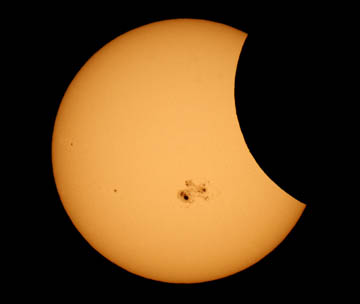
Bob King
With the August 21st total solar eclipse fast approaching, the Sun's on everyone's mind. And having just passed the solstice, it stands highest in the sky and makes a powerful impression on June afternoons. Those planning to be within the path of totality can expect incredible views of Bailey's Beads, pink prominences, stars in the middle of the day and the coup de grâce — the magnificent solar corona. Others not inside that licorice strip of darkness will watch the Moon take a bite from the Sun and then give it back.
More people than ever will have safe solar filters for both naked eye and telescopic viewing. Why not put them to good use in getting to know our local star better? Plus, solar observing is just fun. No mosquitos, dropped flashlights or driving miles to escape light pollution. The Sun's signature features — sunspots, faculae, granulation and limb darkening — are all accessible in instruments as small as 3-inches.
Observing the Sun: Granulation

University of Alabama
Sunspots get the most attention, and we'll get to them in a moment, but even when spots are absent, we can always look for the subtle, granular appearance of the Sun's photosphere, called granulation. Older astronomy guides describe it as resembling ground glass.
As long as the seeing's good, I can discern this exquisitely fine texture across the entire solar disk even at 28x in my 80mm University Optics refractor. It's amazing to think that each granule is a cell of convective gas about 930 miles (1,500 km) across (a bit bigger than the state of Texas) rising up from the Sun's interior like a bubble in a pot of boiling water.
Oh, but that pot has a lot of bubbles. At any given time, there are 4 million granules bumping heads in the photosphere. Their brighter cores are filled with hot plasma on the rise, while darker outlines mark where cooling gas is descending back below the surface. These churnin', burnin' rings of fire make the photosphere jumpier than a school busload of kids in a McDonald's ball pit. Granules live brief lives, only 8 to 20 minutes, before they're replaced by the rising minions from below.
Observing the Sun: Limb Darkening
If you take in a low power view of the full solar disk, you'll notice that it's not evenly illuminated but brightest in the center and dimmest around the limb. Limb darkening shows up better in photos, but once you know to look for it, it's unmistakable.
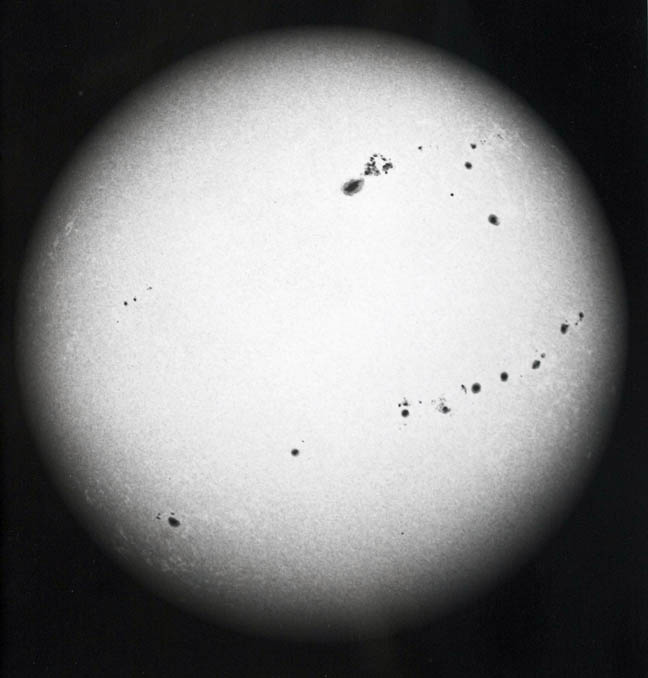
Bob King
When we look to the edge of the Sun (or any star), we can't see to the same depth as we can when looking squarely at its center because our line of sight slices through the disk at an oblique angle. Basically, at the edge we just don't see as deeply into the solar gases. With less material for our gaze to penetrate, the solar rim looks dimmer. A second reason for limb darkening concerns the difference in temperature of the gases in the Sun's core compared to those in its exterior — temperature decreases outward from the core. When you look at the Sun in your telescope, the center is hottest because you're seeing deeper into the core, while limb views are closer to the Sun's cooler surface.
Taken together, these two factors offer us a vision of the Sun that's transformative. Despite appearances, our star has no solid surface. Through a filtered scope, the solar disk looks as hard-edged as a dinner plate. But the reality is we're seeing into a fiery ball of plasma at different depth and temperature wherever we rest our gaze. Almost like having X-ray vision!
Observing the Sun: Sunspots
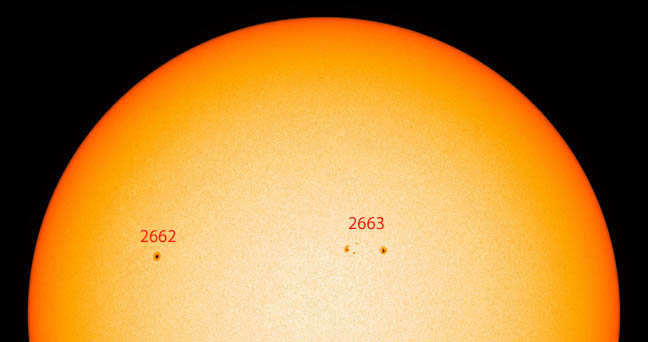
NASA / SDO
Following the parade of sunspots that pops up on the photosphere daily, weekly and sometimes by the hour makes for an easy and informative daytime activity. Sunspots form in what are called active regions, and their numbers wax and wane with the Sun's 11-year solar cycle. Cycle 24, the current one, is the weakest since Cycle 14, which peaked in February 1906. Cycle 24 officially began in 2008, peaked in April 2014, and will bottom out sometime in 2020. So far this year, spots have speckled the Sun on 76% of the days, so your chances of seeing at least a few a week are good. As you'd expect on the downside of the cycle, large groups are becoming scarce.
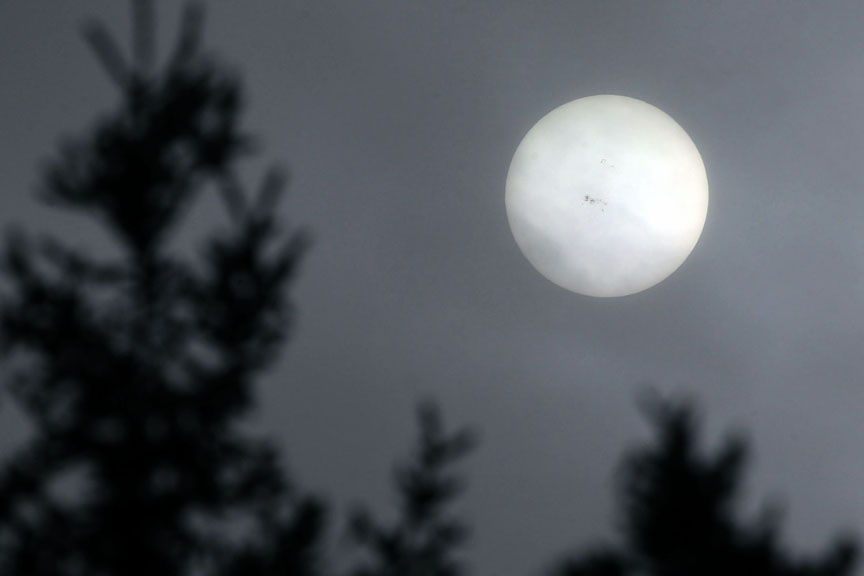
Bob King
Sunspots are the most obvious manifestation of the Sun's magnetic energy and form when differential rotation winds up and intensifies magnetic fields below the surface. The fields become buoyant and break through the surface, creating a sunspot group. Sunspots aren't physical spots per se, but regions of strong magnetic energy that hinder heat from rising from below the surface. As such they're several thousand degrees cooler than the rest of the photosphere and appear dark in contrast.
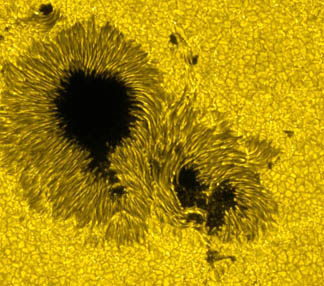
A sunspot often begins life as a tiny, black pore not much bigger than a granule. Should it continue to grow, it develops a dark core (or cores) called an umbra, surrounded by a pale, skirt-like penumbra. The umbra is cooler than the penumbra and makes a dimple some 250 to 500 miles (400 to 800 km) below the surface.
What sunspots lack in heat, they make up in magnetic energy. Many groups resemble bar magnets, where the leading spot has one magnetic polarity and its followers have the opposite. Magnetic fields surrounding the spots resemble the looped patterns of iron filings sprinkled around an ordinary magnet.
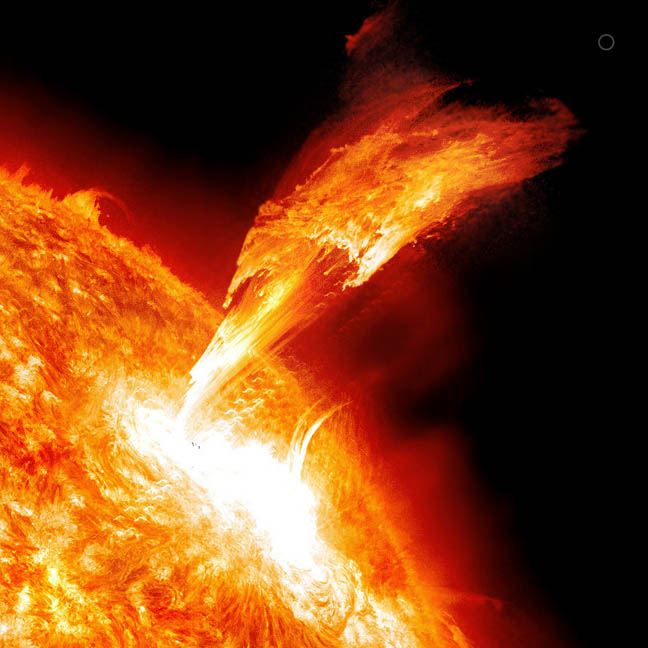
NASA / SDO
Sometimes multiple polarities crowd close together inside the umbra making for complicated and downright messy magnetic fields. When fields of opposite polarity cross paths, they can reconnect, releasing tremendous amounts of energy in the form of solar flares or as outbursts of solar plasma called coronal mass ejections (CMEs). We can't see the heated plasma with our eyes, but multiple times a day, NASA's Solar Dynamics Observatory (SDO) photographs these radiant swirls in far-ultraviolet light. Rarely, an extremely powerful flare can appear as a white spot in white light but most radiate at H-alpha and other wavelengths and require special filters to see.
Subatomic particles released in these explosive events travel outward at more than a million miles an hour and can spark space-weather events at Earth including brilliant auroras.
Watch the growth of sunspot group 1158 in Feb. 2011:
It's fascinating to see the day-to-day changes in sunspot size and complexity. Some last hours, others months. Sunspots can range from 3,500 km to 60,000 km across. A typical group is often bigger than Earth, and the larger ones are plainly visible to the naked eye when viewed through a safe solar filter.
To keep track of trends, try your hand at this traditional way of counting sunspots. First, count the individual spots in all groups, then count each individual group as 10. Add the two together to arrive at the total. There are now more refined methods, but for beginners this method works well.
Observing the Sun: Faculae
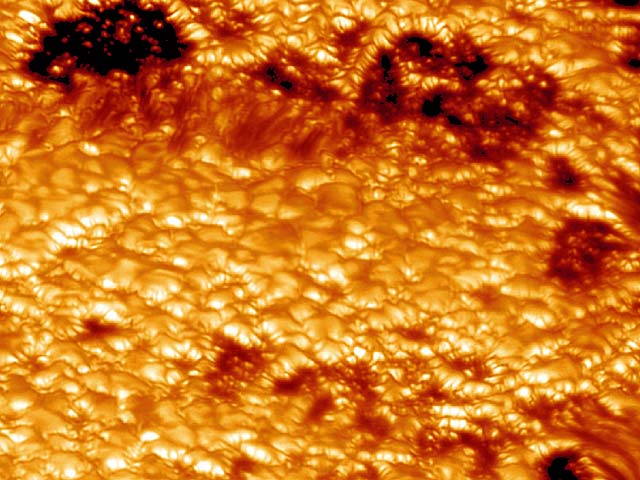
Courtesy Goran Scharmer / Royal Swedish Academy of Sciences
Sunspot groups are often accompanied by small, white flecks called faculae, after the Latin for "little torch." Sunspots may come and go, but faculae often linger longer or even presage the appearance of new spot groups. Faculae are much smaller spots of concentrated magnetic energy; they fleck a granules' walls and are best seen in the outer quarter of the solar disk. Here we view them in profile, their light stacking up to appear more intense than when seen broadside. Limb darkening also enhances their visibility.
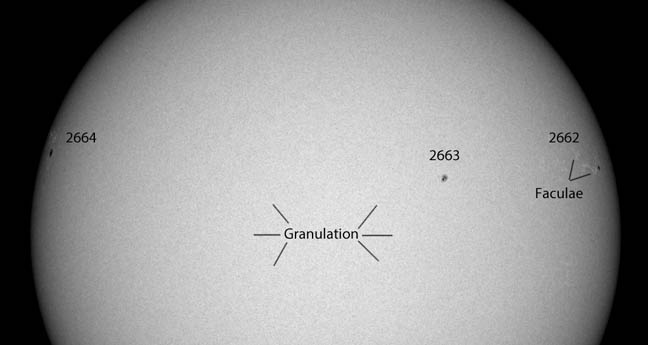
NASA / SDO
But wait. Why are faculae bright when sunspots are dark? Small but strong magnetic fields dilute the gases along the granules' walls, letting us see into their hotter, brighter cores. Like sunspots, faculae appear to be a thing, but they're more of a phenomenon — an invisible hand painting the Sun with a magnetic brush.
The closer I look at the Sun I thought I knew, the stranger it becomes. Join me in my happy befuddlement by snapping on a filter and having a look yourself.
Resources:
* Observers' Guide to the H-alpha Sun
* Solar Dynamics Observatory daily images
 2
2




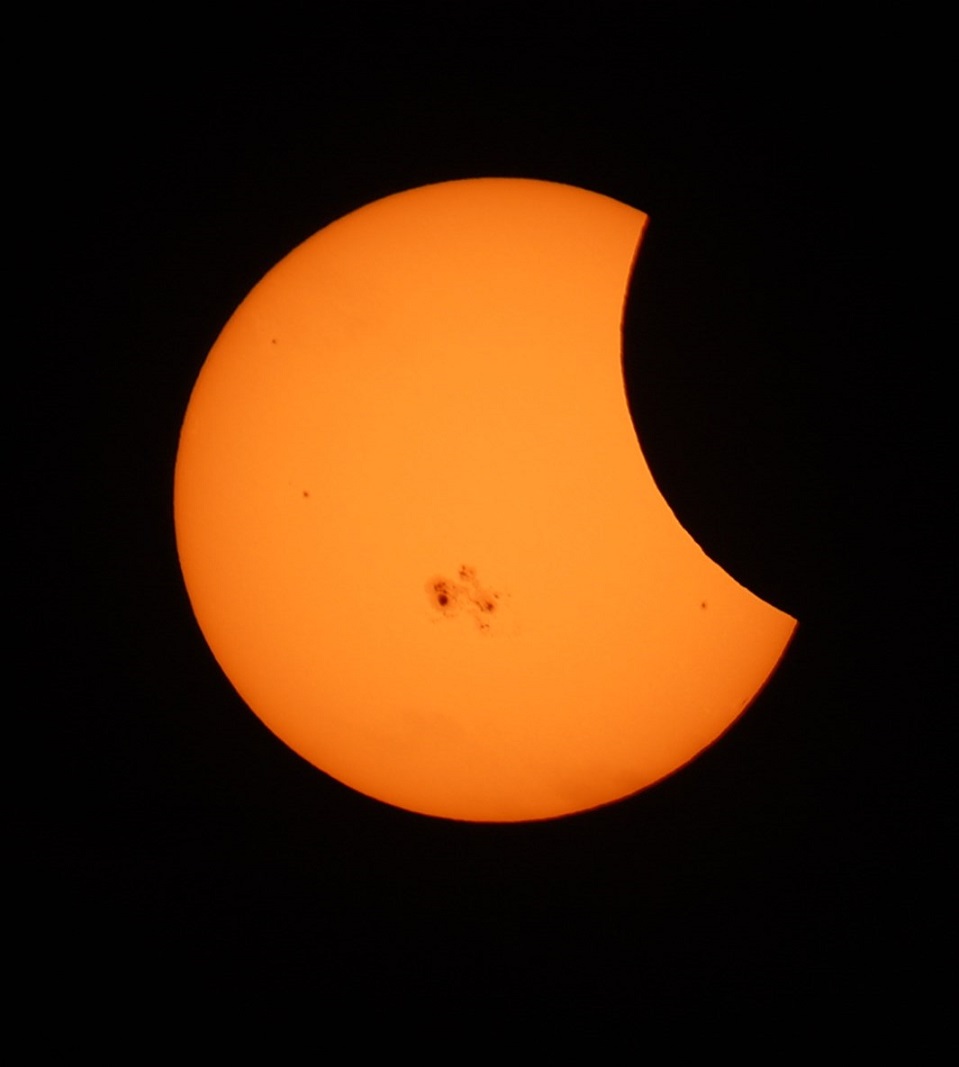




Comments
Anthony Barreiro
June 23, 2017 at 5:36 pm
Bob, that is a lovely photo of the October 2014 eclipse. I set up an 80 mm refractor with a white light filter in a nearby park to show passersby the eclipse and that huge serendipitous sunspot group. I also loaned people eclipse glasses so they could get an unmagnified view. People were surprised how obvious the sunspots were.
Thanks very much for the explanation of the magnetic nature of the Sun's visible surface. I've never really thought about why faculae are bright -- now I know!
You must be logged in to post a comment.
Bob KingPost Author
June 24, 2017 at 9:44 pm
Hi Anthony,
Thank you! That is such a strange and interesting thing about faculae, isn't it? While it's obvious how different a star is from a planet, magnetic effects put it on a entirely different plane.
You must be logged in to post a comment.
You must be logged in to post a comment.